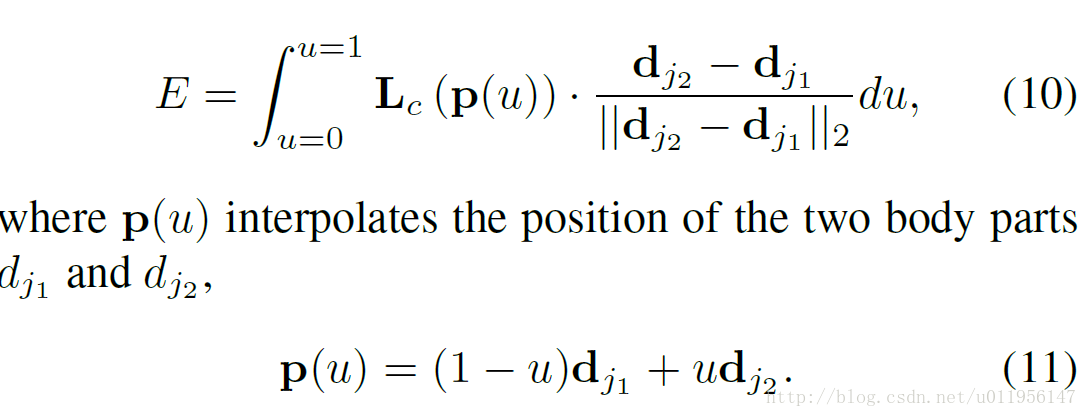2D人体姿态估计,openpose中人体姿态估计部分的主要组成。 **仅作为个人备忘录**
这里记录的是当时看论文记录在笔记本上的内容。后续会分析代码(主要会记录下数据处理部分),这篇论文阅读大多数内容来自 http://blog.csdn.net/yengjie2200/article/details/68064095
Code: https://github.com/CMU-Perceptual-Computing-Lab/caffe_rtpose
Openpose: https://github.com/CMU-Perceptual-Computing-Lab/openpose
参考blog:http://blog.csdn.net/yengjie2200/article/details/68064095


每一个body part(j)算一个confidence map。所以有多少个part(关节),就有多少个相对应part的confidence map。图像区域中每个点都有一个confidence值,构成confidence map。confidence map中每点的值与真值位置的距离有关,离得越近confidence 越高。用高斯分布来描述,confidence峰值就是真值位置。假设k个人,图像中每个人都有预测位置的confidence map,将k个人的confidence map的集合合成为一个confidence map时,取该点各个人的confidence的最大值。这里用max而不用average是为了:及时多个peak点离得很近,精度仍然不受影响。

在test时,confidence score的计算方法:
计算预测的PAF(vector)与candidate limb 方向的alignment (方向是否一致,用点积计算)。
we measure association between candidate part detections by computing the line integral over the corresponding PAF, along the line segment connecting the candidate part locations. In other words, we measure the alignment of the predicted PAF with the candidate limb that would be formed by connecting the detected body parts.Specifically, for two candidate part locations dj1 and dj2 ,we sample the predicted part affinity field, Lc along the line segment to measure the confidence in their association:
